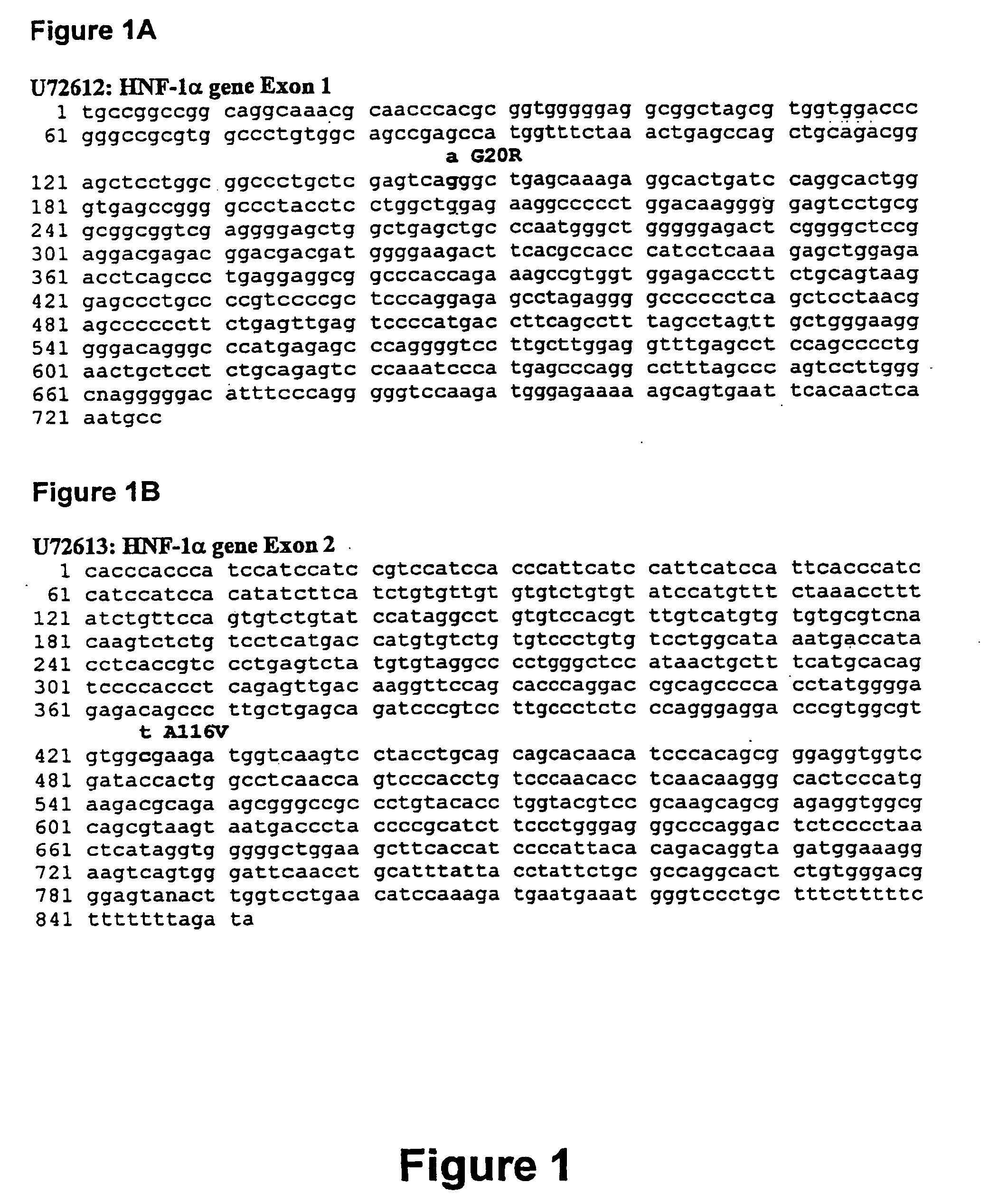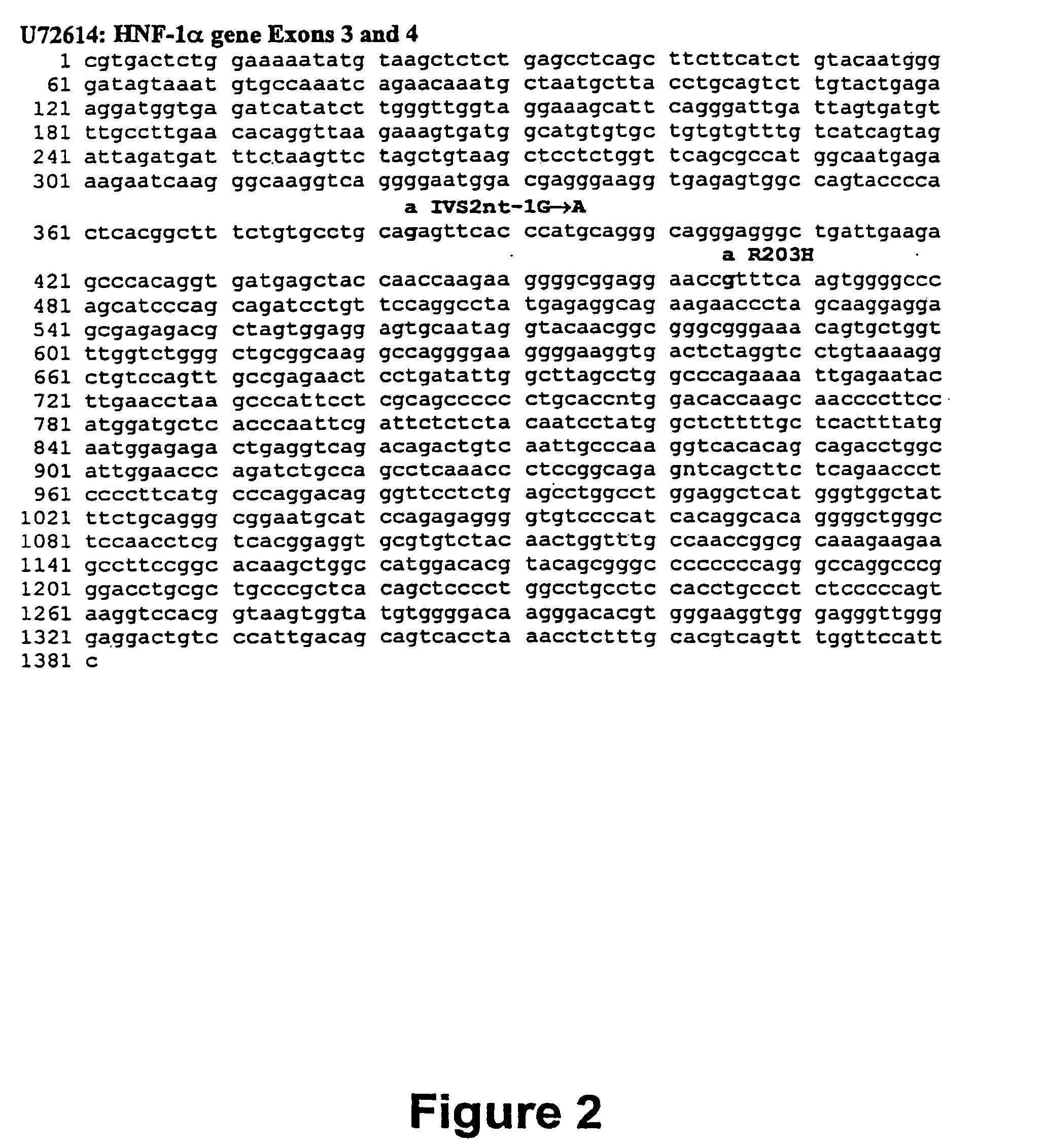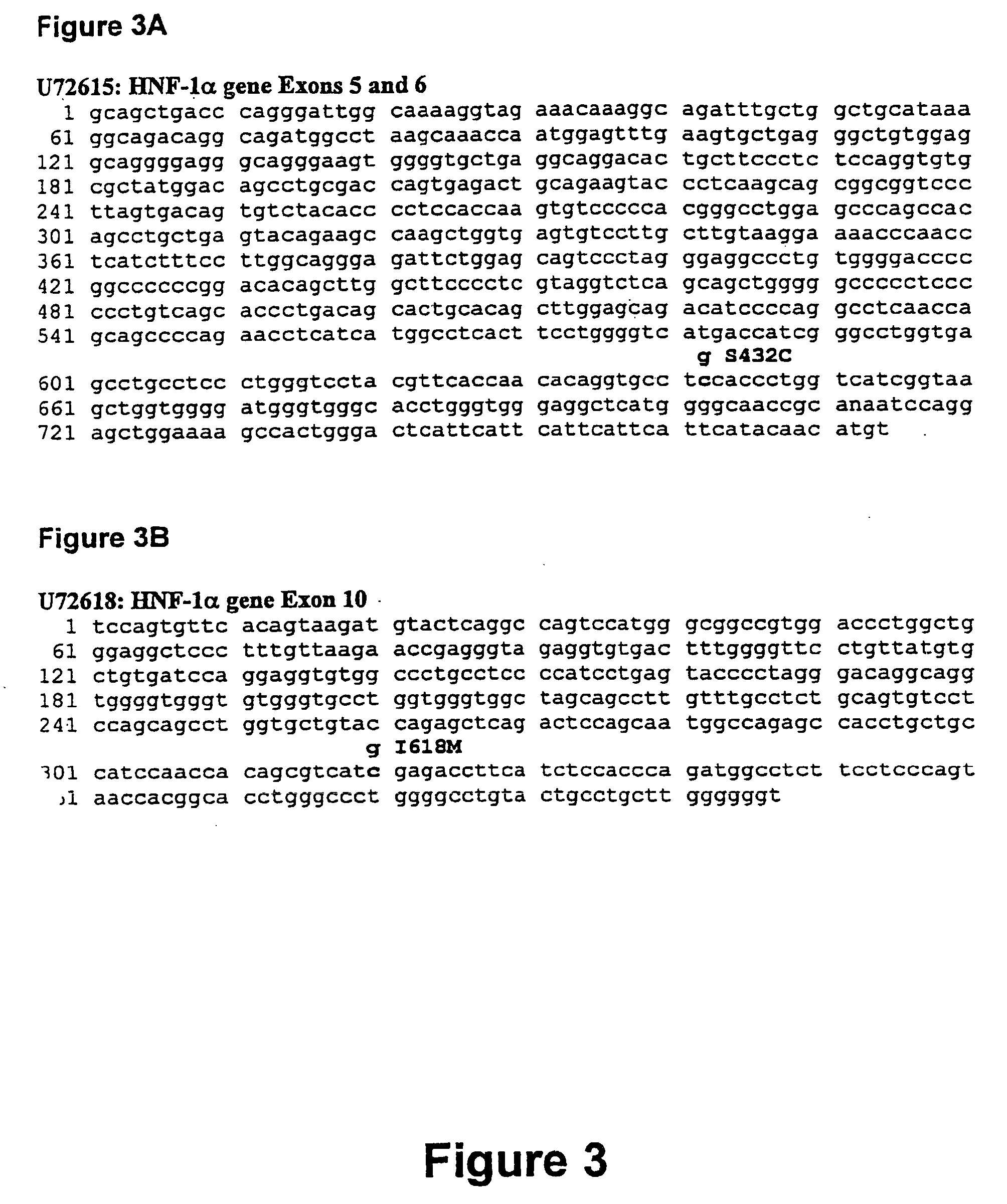Method and compositions for evaluating risk of developing type 2 diabetes in people of chinese descent
- Summary
- Abstract
- Description
- Claims
- Application Information
AI Technical Summary
Benefits of technology
Problems solved by technology
Method used
Image
Examples
example 1
Identification of Mutations in Glucokinase and Hepatocyte Nuclear Factor 1α Genes in Chinese Patients with Early-Onset Type 2 Diabetes Mellitus / MODY
[0059] This example illustrates mutations identified in the glucokinase, HNF-1α and HNF-4α genes in a cohort of Chinese patients. Mutations in the glucokinase and HNF-1α genes are relatively common in early-onset diabetes and they account for about 3% and 5%, respectively, of the present Chinese early-onset diabetic patients.
Experimental Design and Methods
Subjects
[0060] The study group consisted of 92 unrelated patients (age 34±5 years (mean±SD) range 18-40 years; 30 males and 62 females) who were diagnosed with Type 2 diabetes before 40 years of age and who had a positive family history (at least one first degree relative with Type 2 diabetes). The mean age at diagnosis was 30±5 years (range 16-40 years). Thirteen (14%) of these patients met the minimal criteria of MODY (age at diagnosis before 25 years old and presence of diabete...
example 2
Mitochondrial DNA A3243G Mutation in Patients with Early-or Late-Onset Type 2 Diabetes Mellitus in Hong Kong Chinese
[0085] This example illustrates the prevalence of the mitochondrial DNA A3243G mutation in the Hong Kong Chinese population as represented by a large cohort of type 2 diabetic patients with differing ages of diagnosis and clinical phenotypes.
Experimental Design and Methods
Subjects
[0086] The study group consisted of 906 unrelated type 2 diabetic patients diagnosed according to the 1985 WHO criteria (World Health Organization, 1985). This cohort included four groups of patients selected according to the age of diagnosis and the presence or absence of family history of diabetes. Groups 1 and 2 consisted of 219 and 128 patients, respectively, with an early age of diagnosis (≦40 years) and with (Group 1) or without (Group 2) a family history of diabetes. Groups 3 and 4 consisted of 211 and 348 patients, respectively, with an older age of diagnosis (>40 years) and with...
example 3
The Role of the Amylin Gene S20G Mutation in Early Onset Type 2 Diabetes and in the Regulation of Cholesterol Metabolism in Chinese
[0101] This example illustrates the distribution of the amylin gene S20G mutation in Hong Kong Chinese with or without Type 2 diabetes, and its influences on β-cell function and metabolic profiles. The data are consistent with the conclusion that the S20G mutation in the amylin gene may contribute to early occurrence of Type 2 diabetes, and that it may also influence lipid metabolism in the Chinese population.
Experimental Design and Methods
Subjects
[0102] The study protocol was approved by the Clinical Research Ethics Committee of the Chinese University of Hong Kong. Informed consent was obtained from each of the participants. For the study, 227 early-and 235 late-onset Type 2 diabetic patients (defined as age at diagnosis ≦40 and >40 years respectively), as well as 126 non-diabetic subjects (defined as fasting plasma glucose Diabetes Care 20: 1183)...
PUM
| Property | Measurement | Unit |
|---|---|---|
| temperature | aaaaa | aaaaa |
| temperature | aaaaa | aaaaa |
| temperature | aaaaa | aaaaa |
Abstract
Description
Claims
Application Information
 Login to View More
Login to View More - R&D
- Intellectual Property
- Life Sciences
- Materials
- Tech Scout
- Unparalleled Data Quality
- Higher Quality Content
- 60% Fewer Hallucinations
Browse by: Latest US Patents, China's latest patents, Technical Efficacy Thesaurus, Application Domain, Technology Topic, Popular Technical Reports.
© 2025 PatSnap. All rights reserved.Legal|Privacy policy|Modern Slavery Act Transparency Statement|Sitemap|About US| Contact US: help@patsnap.com



